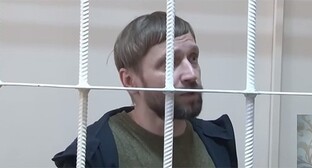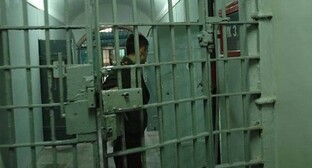27 May 2003, 13:38
Derbent
Rayon (sector) centre in Dagestan, 121 km south-east of Makhachkala. Located on the coast of the Caspian Sea, on spurs of the Tabasaran Mountains of the Greater Caucasus. The territory of Derbent locks a narrow coastline referred to as the Derbent Passage or the Caspian Gate. Seaport. Railway station in the Makhachkala - Baku line. Located on the Rostov-on-Don - Baku highway. Population (1992 est.) 82 thousand, (1897 est.) 14.6 thousand, (1926 est.) 23.1 thousand, (1939 est.) 34 thousand, (1957 est.) 47 thousand, (1979 est.) 67.4 thousand.
It was from the olden times that the Caspian Gate was known as a unique convenient natural way to pass from the steppes of the North Caucasus to Transcaucasia and to the Near East. The strategic significance of this place at the junction of roads laid along the sea and leading to the mountains caused aggressive pursuits of the Scythians, the Huns, the Khazars, the Persians, the Arabs and the Turks over time. Derbent (the Persian Dar-Band for the junction of roads) was founded under command of the Iranian sovereign Yazdegerd II, who ruled in 435 - 457, of the House of Sasanids as an embattled town on the northern border of Persian possessions. Construction of Derbent nullified significance of an ancient city of Caucasian Albania referred to as Chora or Dzhora in Armenian chronicles, as Tzor, Tzur or Tsur in Byzantian chronicles and located slightly to the south of Derbent. The name of the ancient Albanian city in some languages of Dagestan mountaineers sticked to Derbent. The Laks use the name of Churul to refer to Derbent up to now, while the Dargins call it Chulli. The Arabs referred to Derbent as Bab-al-Abvab, i.e. Gate of Gates, the Tartars, the Mongols and the Turks as Temir-Kapi, i.e. Iron Gate, the Georgians as Degvis-Kari, i.e. Sea Gate, the Russians as Derben, i.e. Iron Gate.
Originally, walls of Derbent were made of adobe. Erection of stony defensive walls began in 567 during the Sasanid king Khosrow I Anushirvan's rule. Some of the walls still protect the city in the north and the south. The construction was phased: first, the citadel and the northern wall of the city were built; second, the southern one (both walls were built in parallel to each other; they adjoined the citadel in the west and were protruded into the sea for a long distance from the coastline in the east, thus forming a harbour). Third, the Gornaya (Mountain) Wall (Dag-bary) was built to the west of the citadel. It was more than 40 km long. It was a complex system of defensive structures, intended to prevent by-pass of the fortress through mountain valleys and passages. It was also in the 6th century that the first transversal wall, separating the inhabited part of Derbent at the citadel from the unpopulated seaside, was built. In the 6th - 7th centuries, Derbent was not only an important strong point in fight against the Bedouin, but also a significant cultural centre of the Caucasus. In the 630s, Derbent was seized by the Khazars, who took advantage of weakening of Sasanid Iran because of a war with Byzantium. In 652, the walls of the city were attacked by the Arabs. After Derbent was included into the Muslim Caliphate, the city started building mosques (e.g., the Dzhuma Mosque) as most of its inhabitants were converted into Islam. In the 8th century, Derbent became a large military and political centre of the Caucasus in Commander 'Abd al-malik ibn Marwan's rule. It was here that the caliph's vicegerent resided. In the 8th - 10th centuries, Derbent was the centre of sea trade, the main port of the Caspian Sea. In the 10th century, the Muslim Caliphate disintegrated, and Derbent became the centre of an independent emirate. In 1071, the city was seized by the Seljuq Turks. In the 13th century, Derbent won by the Mongols, fell into decay. In the 16th through the early 18th centuries, Derbent was included into Persia; in the early 17th century, the Safavid governor Shah 'Abbas overreached himself to restore the fortifications and the port and to transform the city into the bulwark of the Safavids in the Eastern and Northern Caucasus. In 1722, Derbent was annexed to Russia as a result of the Persian campaign of Peter I (the population of the city led by the local naib and Muslim clergy arranged an honourable meeting of the Russian Emperor). In 1735, Derbent was re-annexed to Iran under the Treaty of Ganca. Centre of Derbent Khanate and residence of Nadir Shah since 1743. It was occupied by Russian troops in 1796, and conclusively annexed to Russia under the Treaty of Gulistan in 1813.
Under the general plan of 1824, active building up of the lower seaside part of the city (Dubary) began. The transversal wall was demolished, and the city square was laid out in its place. Regular quarters with direct broad streets were laid. Derbent was an uyezd (canton) city since 1840, and a government city since 1846. In the 1840s, the city experienced rapid economic growth, connected, in particular, with development of madder-growing (cultivation of madder, a plant used to obtain cheap stainer). In addition to cultivation and processing of madder and poppy, the inhabitants of Derbent of the 19th century were engaged in gardening, wine-growing and fishery. In 1898, Derbent was crossed by the Petrovsk-Port - Baku railway.
The Decembrist writer А.А. Bestuzhev-Marlinsky had a close link with Derbent. He was reduced to the ranks and served here in 1830 - 1834; the old part of the city has kept the house where he lived. The famous surgeon I.P. Pirogov visited Derbent in 1847. The French writer A. Dumas-PERE put down his impressions of Derbent in his itinerary referred to as The Caucasus from Prometheus to Shamil.
By the beginning of the 1990s, Derbent had a factory of grinders and the Electrosignal factory. Derbent is an ancient centre of carpet weaving. Wool-spinning mills of the city supply not only the local carpet factory, but also a lots of similar enterprises in Central Asia and Transcaucasia with wool. The cannery (producing fruit, vegetable, fish and meat canned food) of Derbent is known for production of high-grade grape wines. The city has a cognac combine, enterprises of food-processing industry, production of building materials. There is a Carpet-Weaving School in the city.
Derbent has the S. Stalsky Lezghin Theatre. The museums of archaeology, culture and household activities of ancient Derbent, carpets and folk applied art of Dagestan, ethnography and household activities of the peoples of the Caspian Coastal Area, Battle Honour function at the historical, architectural and art conservation area of Derbent.
Within the citadel, remains of palace complexes of different periods were found: the one at the eastern wall belongs to the Albanian period (antique, small dimensions, simple configuration, laid of stones, decorated with an ornamented carving), Sasanid and Arabian period (monumental, complex in their lay-out; the Sasanid palace dates back to the 6th - 7th centuries and takes about 3,000 square meters); in the north-west part, the part below belongs to the Pre-Mongolian period (2 complexes of a large treated stone and burnt brick), the part above to the 14th - 17th centuries (2 complexes of burnt brick and quarry stone); the ruins of the Khan of Derbent's palace structures have been preserved (second half of the 18th century), an underground structure referred to as the stony sack (a cellar or a prison for the Khan's prisoners), water tanks (early 17th century), baths (rebuilt in the 17th century), a guardhouse (Classicism, 1828; rectangular planform, one-storeyed, an arcade in front of the main facade), valla of Derbent (stone-coquina, width 2.3 - 3.8 m, height up to 12 - 15 m) with towers and gates, including the gates of Kyrkhlyar-Kapy in the northern wall (6th - 13th centuries) and Orta-Kapy in the lower wall (originally built in the 6th century; was repeatedly rebuilt). The upper, older part of Derbent, adjacent to the citadel, is a typical Muslim medieval city with a network of narrow curved streets, lined by dead facades of 1-2-storeyed houses, with mosques, water fountains, baths. This part of the city is the site of a complex of the Dzhuma Mosque, consisting of the mosque itself (8th century), a madrasah (15th - 19th centuries) and three arch gates (17th - 19th centuries); the Kyrkhlyar Mosque (17th century), of rectangular planform, with a conical dome over the central part; the Minaret Mosque (18th century; partially re-built in the 19th century) with a lone half-destroyed minaret (14th century); the Chertebe Mosque (18th - 19th centuries) with carved wooden details and a pile bearing flat overlappings and a gallery. Vicinities of the cemetery of Kyrkhlyar (a part of the northern cemetery of Derbent) include the former Khan's Mausoleum (1787 - 1788, a building of octagonal planform with a conical dome); baths, nearly 2/3 of which has gone into earth), arched and topped with domes (17th - 18th centuries); underground tanks (17th - early 19th century); remains of a caravanserai (17th - 18th centuries). The lower, new, regularly planned part has preserved buildings of the 19th - early 20th centuries: a railway station (late 19th century), a Passage (covered market), the Armenian Temple (the present Museum of Fine Arts; 19th century).
In the 20th century, Derbent was reconstructed under the general city-planning scheme of 1955. A lot of residential houses (a microdistrict to the north from the main building up with multi-storeyed houses) and public buildings (including the cinemas of Rodina, Yubileyny).
The city installed monuments to fighters for the Soviet Power in Dagestan (sculptor G. Geybatov, architect V. Skugarev); S.M. Kirov (1938, architect I. Oleynikov); soldiers who perished during the Great Patriotic War of 1941 - 1945 (1985, S.Y. Yagudayev, S. Khizgilov).




